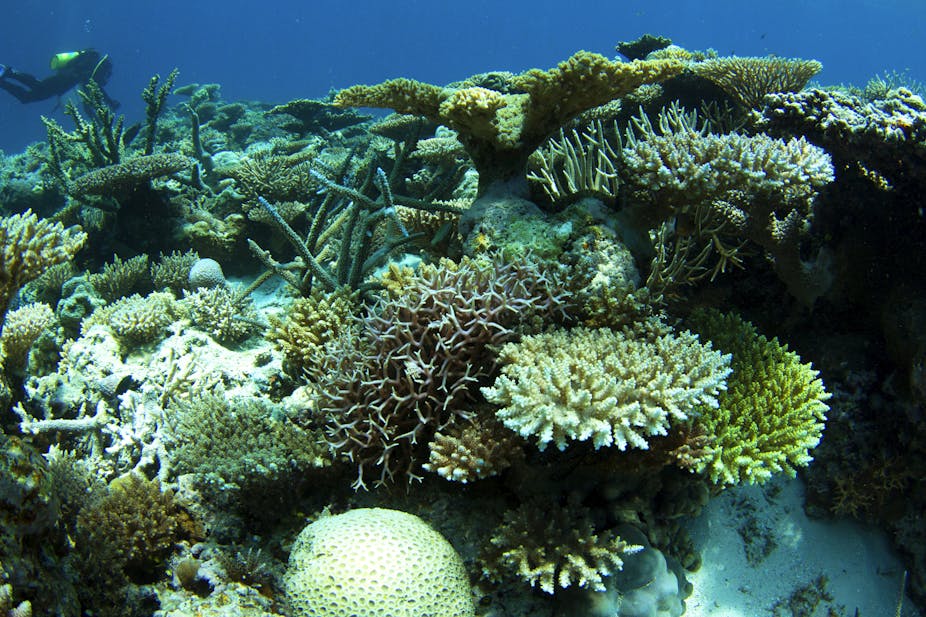Earthquakes, volcanoes and movement of the Earth’s tectonic plates influence coral diversity patterns more than short-term environmental changes, a new study by Australian researchers has found.
The study reveals a major role for long-term geological processes on coral reefs and has important implications for coral conservation.
Because coral communities arise from long-term geological processes that take place over millions of years, they will be even harder to replace if lost due to human impacts.
Coral reef is home to 25% of all species in the sea, making it crucial to biodiversity and provides essential ecosystem services, ensuring fish for island communities.
The study shows long-term geological processes shape the pattern of current reef biodiversity and explains why some coral species are more widespread than others.
Using maps of more than 700 coral species, scientists from the ARC Centre of Excellence for Coral Reef Studies and James Cook University observed 11 regions in the Indo-Pacific where groups of coral species reached the edges of their distributions simultaneously.
This means that, at these locations, species diversity changed abruptly.
Researchers found that these areas where diversity changed were closely aligned with significant geological features such as movements in tectonic plates or groups of volcanic islands.
Lead author, Dr Sally Keith from the ARC Centre of Excellence for Coral Reef Studies said that this approach distinguished their study from most.
“Traditionally scientists have tested these theories by looking at how many species occur in different places,” she said.
“We used a fresh approach that focused on where species stopped occurring and why.”
The significance of the changes in coral diversity being driven at large scales by geological history challenges the view that these patterns have been generated by short-term changes in environmental conditions or available coral habitat.
No quick fix
Zoe Richards, Coral Biodiversity Researcher at the Western Australian Museum said the research highlights why it is important to protect biodiversity and our evolutionary heritage.
“While this study intuitively concludes that the current distribution of corals is a result of both historical and contemporary processes, the results echo that there will be no quick fix for threatened coral biodiversity,” she said.
Correction: An earlier version of this story said the study showed that earthquakes, volcanoes and movement of the Earth’s tectonic plates, influence decline in coral habitat more than short-term environmental changes. In fact, the researchers did not study coral decline. It has been changed ‘Earthquakes, volcanoes and movement of the Earth’s tectonic plates, influence coral diversity patterns more than short-term environmental changes, a new study by Australian researchers has found.’

